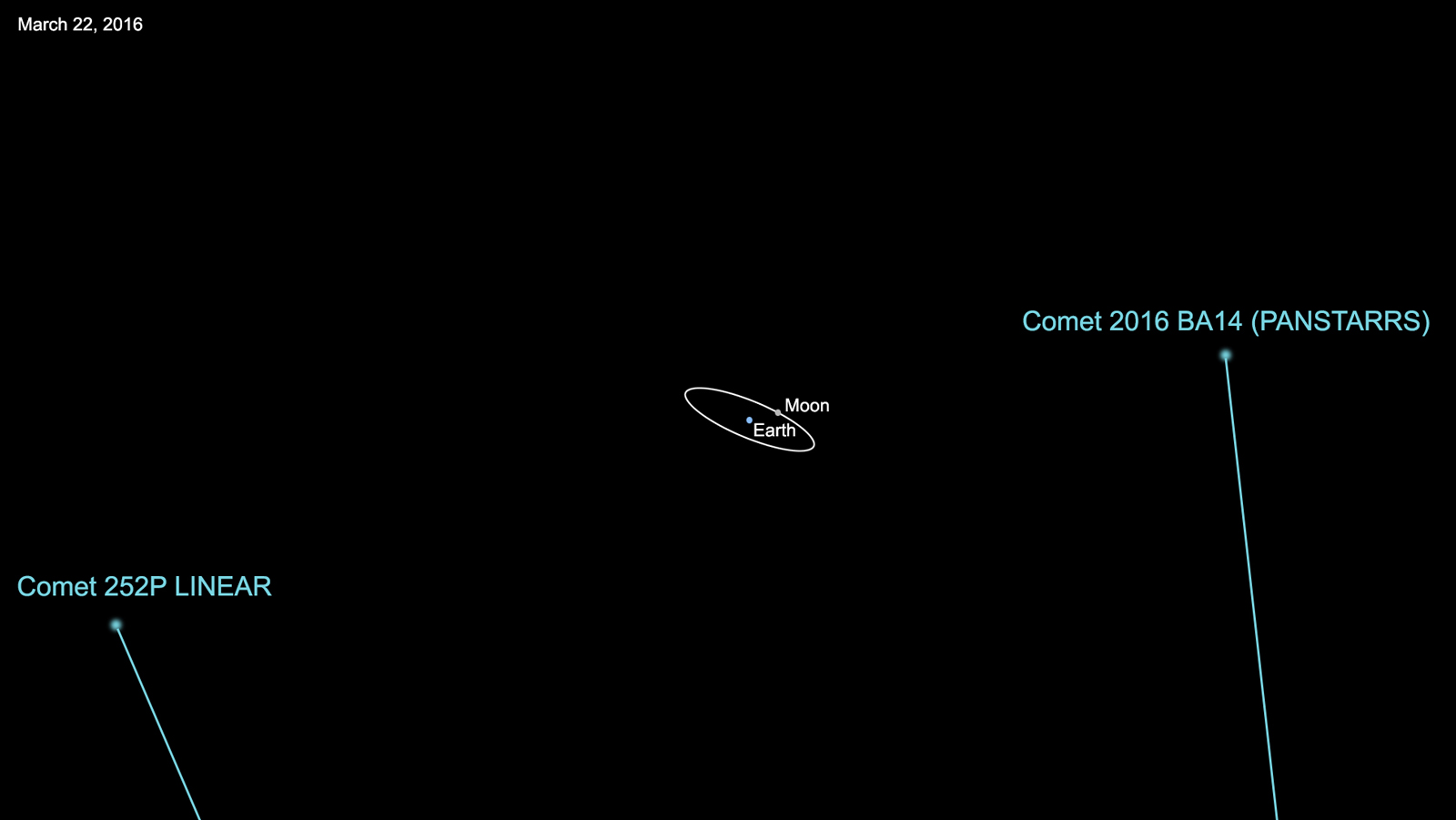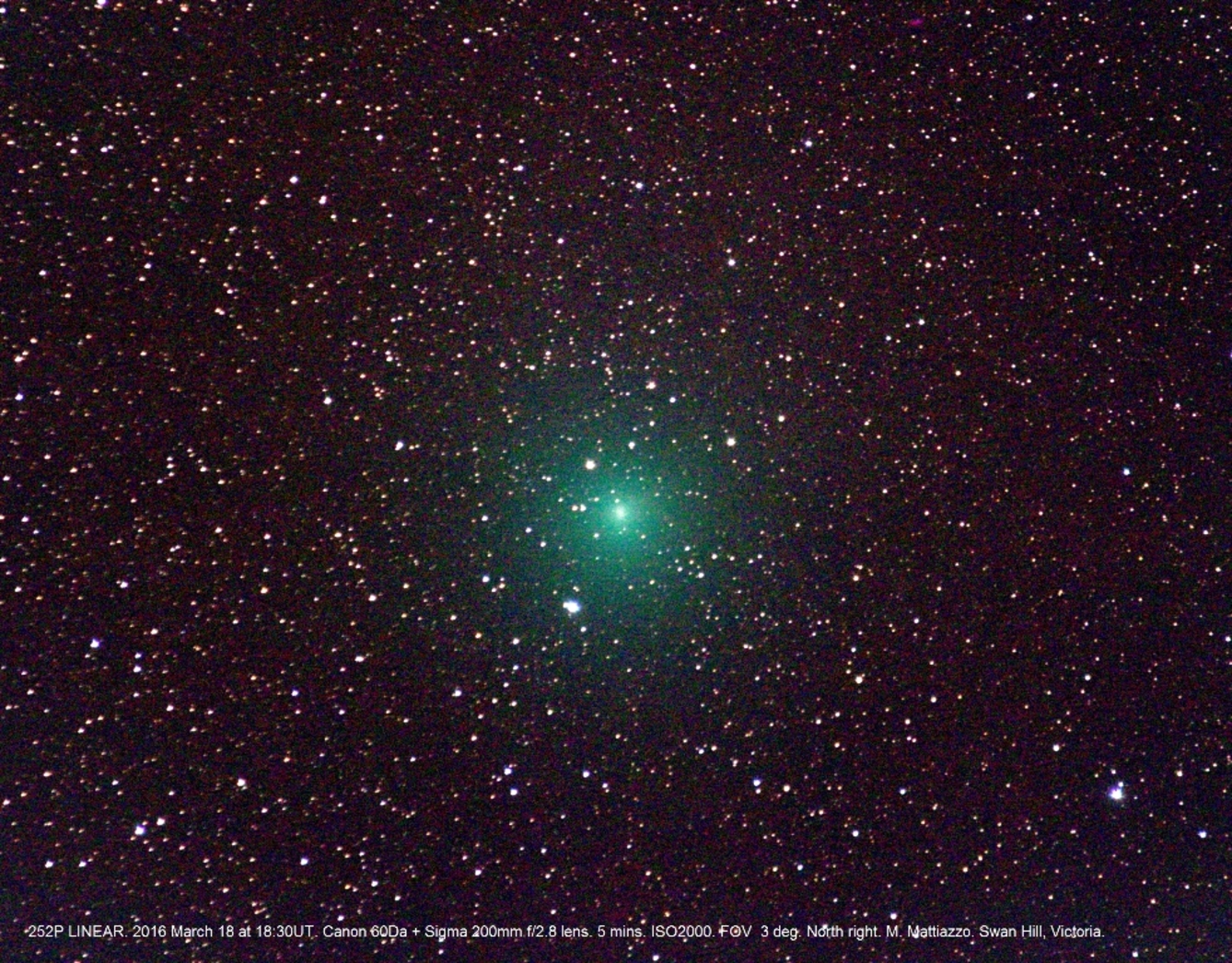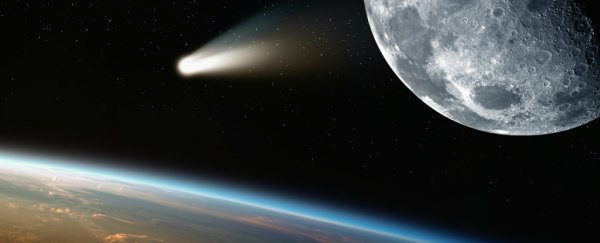On Monday and Tuesday this week, two comets will zip past Earth, with one of them coming closer to our planet than any comet since 1983. And the larger, but more distant, of the two is becoming so bright, scientists believe that at its closest point, it might be visible in the night sky with the naked eye.
The smaller comet, Comet P/2016 BA14, won't be quite so obvious, but it'll pass by us at a distance of just 3.5 million km (2.2 million miles), making it the third closest flyby of a comet in recorded history.
To be clear, that's still more than nine times further away than the Moon, so there's no chance the comet will hit us (and in case you had any doubts, NASA uses the word "safely" five times in its press release). Still, the event is sure to make for some pretty spectacular skywatching, and it could also teach us a lot about how comets work.
"Comet P/2016 BA14 is not a threat," clarified Paul Chodas, manager of NASA's centre of Near Earth Object (NEO) Studies. "Instead, it is an excellent opportunity for scientific advancement on the study of comets."
What's so special about these two comets is that scientists don't really know how - or even if - they're related. Also, having two comets passing us so closely within a day of each other is an incredibly rare occurrence.
"There are many more asteroids in near-Earth space than comets, which are significantly more rare," Michael Kelley, an astronomer at the University of Maryland, told The LA Times. "When a comet does come this close to Earth it is something to get excited about, and take advantage of to learn whatever we can."
The larger comet is called Comet 252P/LINEAR, and was first discovered back in 2000, and has been monitored ever since. But comet P/2016 BA14 was only spotted in January this year, and at first, astronomers thought it was a potentially dangerous asteroid heading towards us.
But when they saw the crossover in the two objects' flyby dates, they decided to investigate further, and found that P/2016 BA14 actually has a tail, which means it's not a big chunk of rock or metal, like an asteroid, but a mix of dust and rock frozen together into a solid mass, AKA a comet.
The orbits of the two comets aren't identical, as you can see in the image below, but they're similar enough to suggest that they're somehow linked - one of the leading hypotheses so far is that comet P/2016 BA14, is a fragment that broke away from the larger comet at some point.
 NASA/JPL-Caltech
NASA/JPL-Caltech
But what's getting people really excited is that Comet 252P/LINEAR is already around 100 times brighter than expected, and is getting close to the point it'll be visible with the naked eye.
Although it won't be getting as close to us as P/2016 BA14, it'll still pass by at a snug distance of 5.2 million km (3.3 million miles), which makes it the fifth closest comet in recorded history.
Comet 252P/LINEAR is also a very pretty shade of green, because of the release of diatomic carbon (C2), a gas that glows green when its molecules become ionised.
 M. Mattiazzo
M. Mattiazzo
For those of you wanting to watch at home, there's good and bad news. Unfortunately, unless you're in the Southern Hemisphere, Comet 252P/LINEAR isn't going to be visible to you at its closest point.
Even worse, the closest approach occurs at 9.14am EDT on March 21 (12.14am AEST on March 22), two nights before the full moon, so even if you're in the Southern Hemisphere, you might struggle to see it because it's such a large and hazy object that can easily be washed out by the Moon's light.
The good news is that the Virtual Telescope Project will be hosting live broadcasts showing the flyby of both the comets on March 21 and 22. Comet P/2016 BA14 will make its closest approach at around 11.30am EDT on March 22 (2.30am AEST on March 23), so you should have the chance to see the comets zip through the night sky from the comfort of your own home.
And if Comet 252P/LINEAR stays bright for the next couple of weeks, people in both hemispheres will have the chance to spot it. There's also the possibility that a weak meteor shower will follow on March 28 as Earth crosses the dust trailing in the comet's orbit.
Either way, the global astronomy community will have their best telescopes trained on the pair - including the Hubble Space Telescope, so over the next few weeks we should learn a lot more about them.
It's a good time to be watching the skies.
